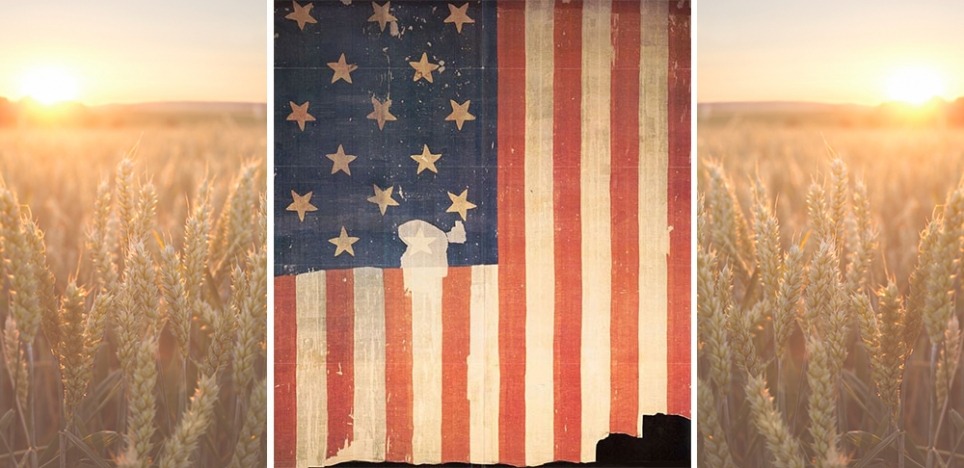Picture inspired by the "star-spangled banner" flag from Fort McHenry that now hangs in the Smithsonian National Museum of American History in Washington, DC.
A Short History of the Star-Spangled Banner
On September 14, 1814, during the War of 1812, a lawyer named Francis Scott Key watched rockets light the pre-dawn sky as the British bombed Fort McHenry, a coastal bastion in Baltimore, Maryland. He was anxiously waiting to see the enormous U.S. flag with its 15 stars and 15 stripes, known as the Star-Spangled Banner, wondering whether it "yet waved" — which would mean a U.S. victory in the battle.
The sight of "the rockets' red glare, the bombs bursting in air" followed by the flag catching "the gleam of the morning's first beam" inspired him to write his poem "Defence of Fort M'Henry." Key gave his poem to his brother-in-law, who noticed that the words fit the tune of a song by English composer John Stafford Smith that had grown popular in the U.S. With the lyrics and tune united, "The Star-Spangled Banner" was born.
The congressional bill which made the song the official American national anthem did not pass in the Senate until more than a century later, in 1931. "Hail Columbia," "My Country, 'Tis of Thee," and "America the Beautiful" were among the songs that also served as de facto national anthems.
A Call for an Alternative National Anthem
As soaring as its tune and some of its sentiments may be, "The Star-Spangled Banner" presents a troubling spin on our national values, especially in these lines from the last verse:
"Blest with vict'ry and peace, may the Heav'n rescued land
Praise the Power that hath made and preserved us a nation!
Then conquer we must, when our cause it is just,
And this be our motto: 'In God is our trust.' "
From Key's perspective, God takes sides in war. It's clear, the lyrics suggest, who's just and who isn't as far as heaven is concerned. This point of view has increasingly come to be viewed with skepticism amid evidence of the losses and horrors that war doles out indiscriminately among those caught in its grasp.
Wikipedia defines a national anthem as "a patriotic musical composition that evokes and eulogizes the history, traditions, and struggles of its people." As part of The Practicing Democracy Project, we invite you to submit your recommendations for a song that from your point of view most accurately reflects America's values and virtues, such as equality, freedom, justice for all, the common good, and popular sovereignty — the idea that the power of government comes from us, the people.
We recommend that you provide us with a link to the version of the song on YouTube.com. If you don't know how to search on YouTube, send us the song title and, if important, the performer, and we can try to find it. Please send your ideas to visitorcall@SpiritualityandPractice.com. To inspire your ideas, here are a few favorite choices from our S&P team:
Thanks to all of you who have sent suggestions. Here are a few more of the ideas so far:
